
Abu Hamid al-Garnati and the wonders of the world
Abu Hamid al-Garnati was an important figure from Granada who wrote about a considerable number of subjects throughout his ninenty years. For his travel stories he followed the Arab tradition of the literary genre known as kutub al-‘aja’ib(book of wonders).
Born in the year 1080 in the city of Granada, under the last of the Zirid kings, Abu Hamid al-Garnati −so named after his hometown Garnata (Granada)− was an indefatigable traveller and merchant, a writer in multiple fields who also undertook missionary tasks from the Arab West to the northern and easternmost reaches of the Islamic world and beyond.
His ancestors should have been well acquainted with the political activities of those kings, and they likely suffered the consequences of such an eventful history of the Iberian Peninsula over almost the whole 11thcentury and, more exactly, that of the Zirid king of Granada. Abu Hamid’s father was one of those who probably fled Granada with their families at the threatening approach to the city of the Almoravid king Yusuf ibn Tashfin in 1090. The Almoravid emir’s expedition ended with no need to besiege Granada, first with the city’s submission and then with the immediate dethroning of the Zirid king Abd Allah.
When he was 10, his family, after leaving Granada, took refuge in Uclés, which at the time belonged to the Christian king of Castile, Alfonso VI, who at that moment had good relations with the Granadan king.
In the year 1180 the Almoravids conquered that borderland, defeating the Alfonso VI’s armies at the famous Battle of Uclés which could had been shortly before the conquest of that city by the Almoravids when Abu Hamid had to flee. It might have been also that moment when he decided to leave the Iberian Peninsula toward the East, not knowing what was exactly the reason that motivated him to take such a decision, although we can conjecture that it was to escape from the religious and cultural fundamentalism that ruled in Al-Andalus under the Almoravids.
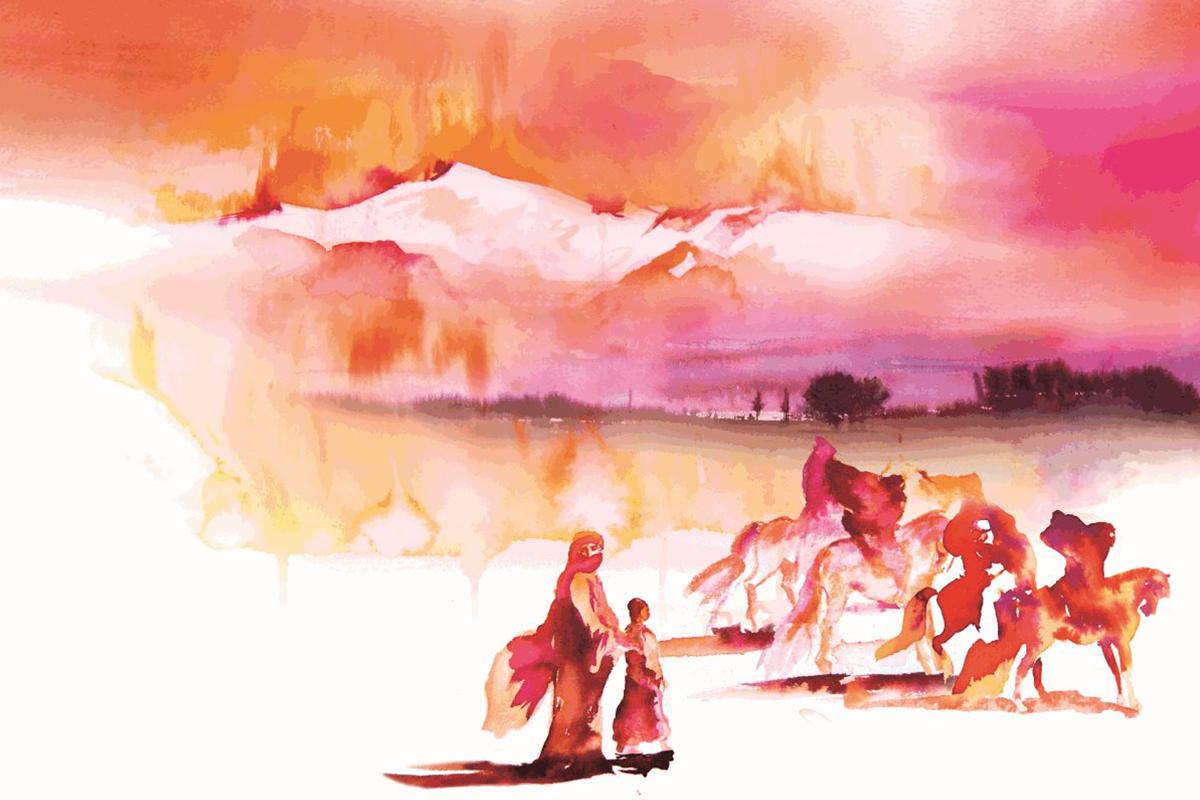
In the 12th century there existed already a diversified network of roads that went from Al-Andalus across North Africa toward the East. On his way, our author followed one of those roads, as many other travellers of the time did. EIn his two works the Mu’rib and the Tuhfa, written many years later in Iraq, share interesting features of his home country.
Abu Hamid’s accounts on his travels throughout the Islamic world describe the places he visited not only from a merely geographic point of view, but also considering the existence of “wonders” or something related to events or facts that caught his eye. In this way, when he recalls Al-Andalus from afar, he locates in the Iberian Peninsula the legendary and fabled “City of Copper”, whose building was attributed to King Solomon’s wisemen, for which we have many references in medieval Arabic literature as well as in the Koran. He tells about its ramparts, which were such that if a daring man managed to climb them, he would be overcome by fits of hysterical laughter and plunge inside never to be heard from again…
Authors of the Arab East said that the city was located at the world’s outer limits, and they attributed its building to Alexander the Great, named among them as “the Two-Horned” or Bicorne. The city was said to be built near the imposing rampart of Gog and Magog, probably built to separate the East from the West. According to Al-Garnati, it was Solomon’s followers who also built the Iberian cities of Toledo and Zaragoza. Al-Garnati described a magnificent bridge from the first city, rising to the sky “like a rainbow,” and of the second, he wrote of its magical powers held by talismans placed in the city gates to prevent reptiles, insects and scorpions from entering. Although it is likely that during the early stages of what became his lifelong trip to the East he remained for a time in Morocco, it is unknown if he reached the Saharan trade city of Sijilmasa at that country’s edge of the desert. Yet, it is certain that he travelled to Tunisia, and there he visited Kairouan.
On the eastern “side of the confluence of the two seas” (the Strait of Gibraltar) he locates in the city of Ceuta the myth of the Roc by which Moses arrived, and where Joshua forgot the broiled fish from which they ate a half “whose other half leftover was revived by God, let Him be exalted, for the sea to have its offspring till our days.” It was called the “sole of Moses”, after another legend that in the parting of the Red Sea to allow the passage to Egypt, a fish was found in the middle parted in two and each of the two halves became a flat fish, hence giving origin to the species.
Also, he could see the statue or “Idol of Cádiz,” likewise reputedly built by the Two-Horned, which was a huge statue whose right hand reached into the so-called Black Sea (the Atlantic Ocean) to push back the waves and other dangers for those who entered that ocean.
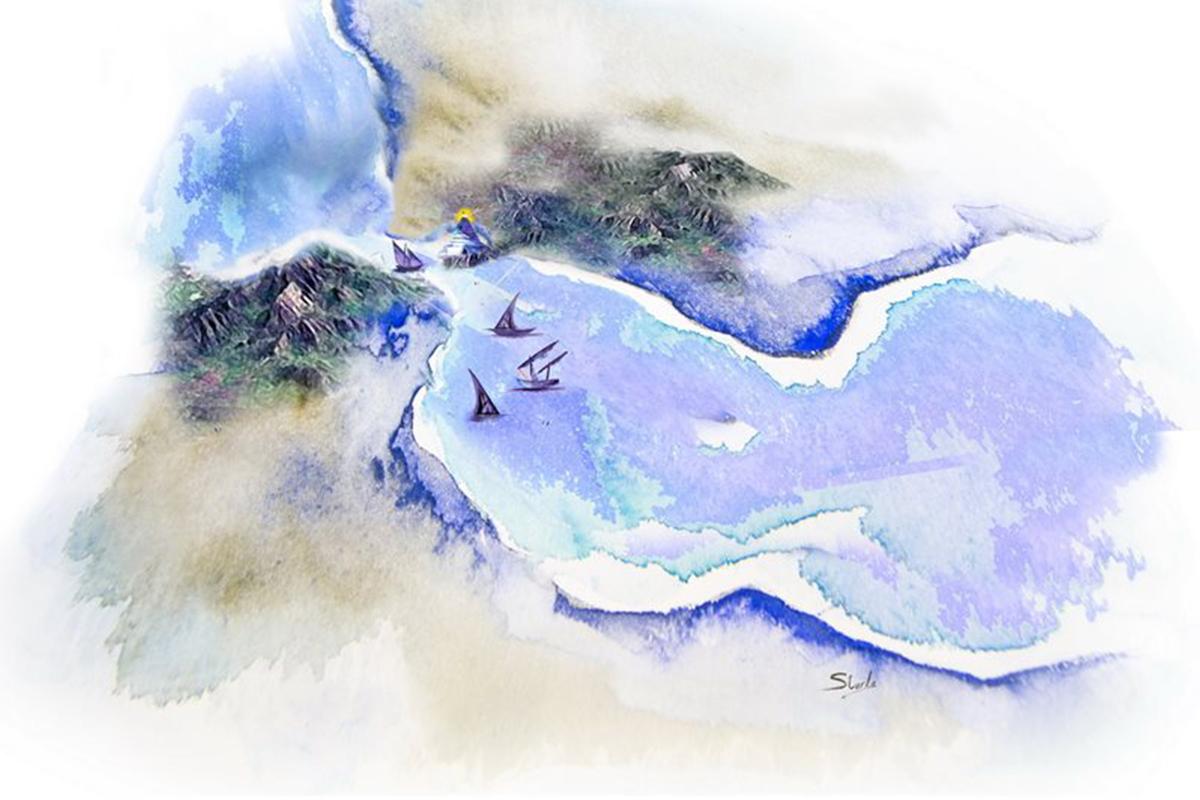
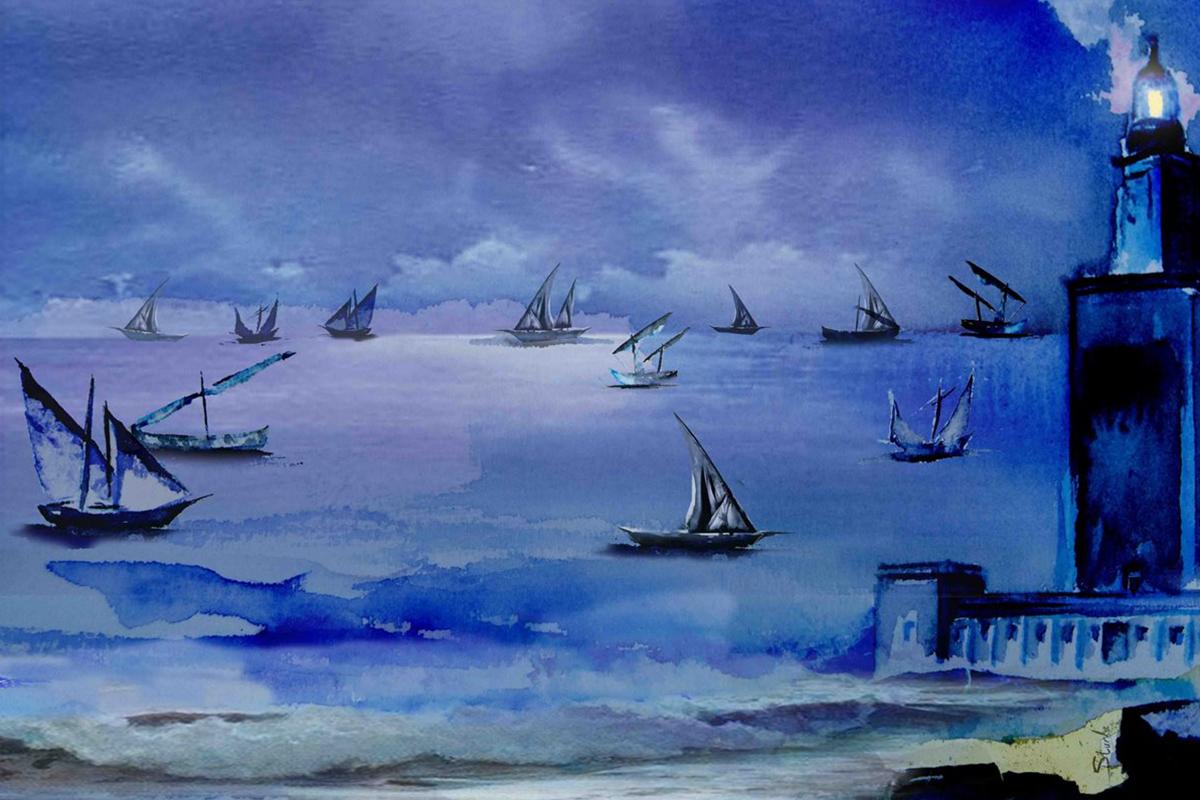
In the year 1115, when he was 34, Al-Garnati reached Alexandria via Sardinia and Sicily. Of this latter land, he wrote: “And in the Green Sea (the Mediterranean) there is a group of islands, where one of them is very big and is called Sicily. It has cities, fortresses and manors; it is one of the richest of God’s countries. By the sea, there is a huge mountain. It is the mountain of fire. From its summit, a blue smoke pours out during the day and by night a fire burns that illuminates as far as ten parasangs (about six kilometres).” This reference to Mt. Etna described the typical events of an eruption of this type accurately, although not in scientific terms.
He later explicitly mentioned Alexandria’s famous and entirely real lighthouse, and he gave its measurements. After describing and sketching its architecture, he added the detail of its enormous mirror for reflecting the fire so that those arriving by “Sea of the Rum” (Eastern Mediterranean Sea) could see it at a distance of even several days and nights offshore. Next, he described Solomon’s Audience Chamber, located, according to our author, a mile from Alexandria. This marvellous room had beautiful columns, which attracted everybody’s attention, particularly the one placed in the eastern side, which moved to track the sun’s movement. According to Al-Garnati, visitors put pebbles under this column’s base, which remained suspended in the air, and then were ground to dust as the column rotated its position.
Legends of magically moving columns were common in Middle Ages. Marco Polo, in his work Il Millione, spoke of such as a magic marble column that stood suspended, which was in the church of Saint John the Baptist in Samarkand.
Even today, Jordanian tour guides point out a column at the Temple of Artemis in Jerash that is said to have had a similar property whose movement can be clearly noticed. Rather than putting a pebble under the column visitors put a long nail, whose movement can be easily noticed.
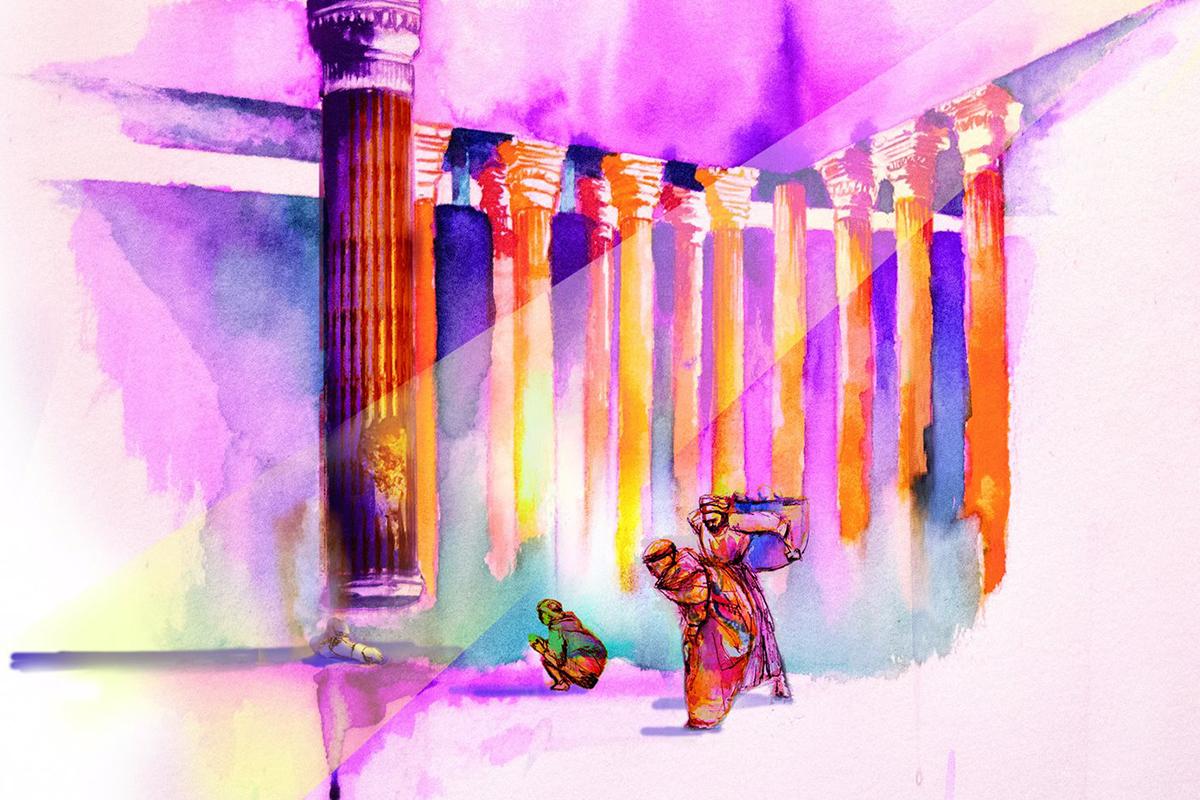
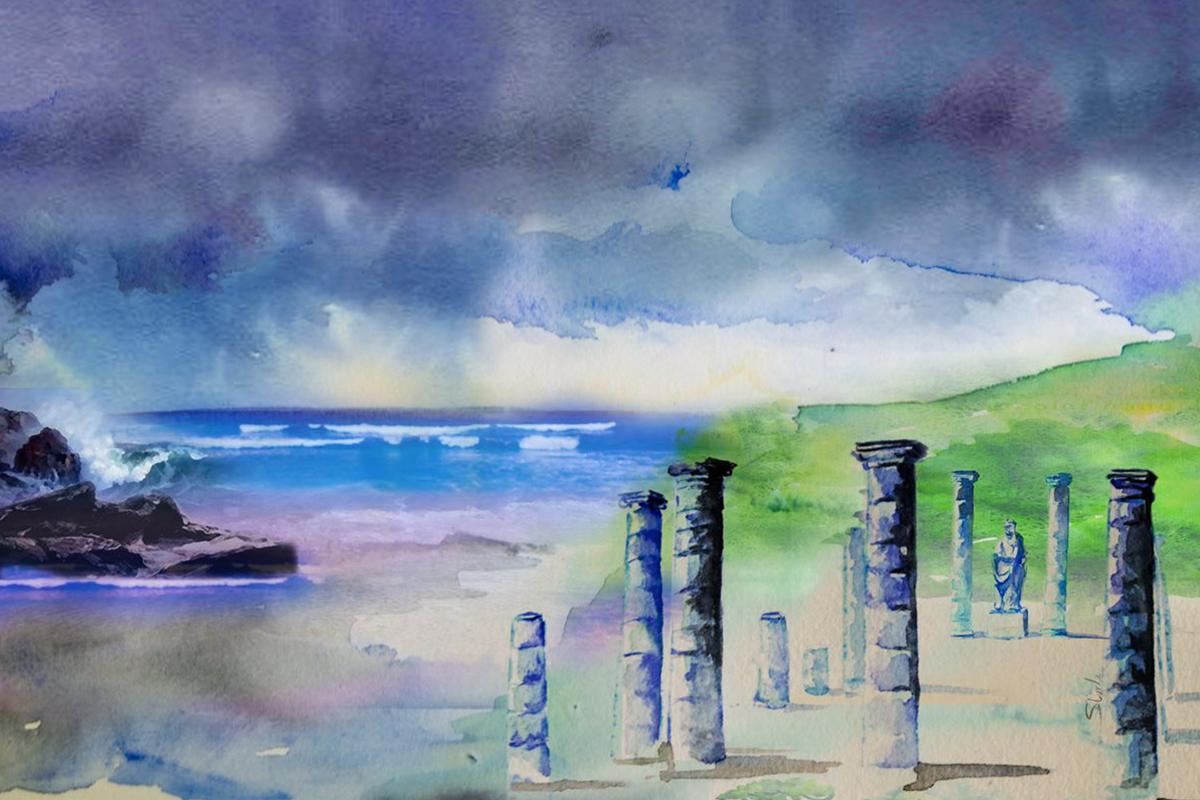
In Cairo Al-Garnati studied with the city’s leading scholars of the time, and he came to have a wide knowledge of Egypt, increased by what he acquired in his years of residence in the country. He offers us quite a detailed description of the pyramids, although what especially interested him was the problem of water supply in Egypt. Egypt −Abu Hamid comes to say− is a country where it does not rain in winter nor in summer; yet life there is prosperous because the Nile overflows at the end of summer, flooding the ground and hence allowing its cultivation. Once water has reached twelve cubits height, but not before that, a town crier announces it, and later he directly announces the flooding levels. When water reaches sixteen cubits height, annual taxes for cultivating the land must be paid and a big party is also celebrated. If water rises twenty cubits height, then it covers every corner of the cultivated surface, and prosperity is at its maximum degree; but if it overtakes that height, villages and hamlets become overflooded and the situation is catastrophic. The waters of the Nile remain on the surface of the ground forty days once it has reached its optimum height. Sowing is done afterward, and the land keeps enough moisture until the harvests ripen. Abu Hamid describes a nilometer by a mosque, which consisted of a stone enclosure with a column of polished white marble in the centre, twenty-four metres high, where cubits, inches and one sixth of an inch are marked.
Also related to the Nile he describes much in detail the crocodile, one of the wonders from Egypt that both in ancient times as in the Middle Ages caught the attention and aroused the curiosity not only of naturalists and geographers but also of intelligent travellers and observers who visited the Nile.
In the year 1124, Al-Garnati reached Baghdad, but he had first taught the hadizand undertook studies in Damascus, where he quite probably visited the ruins of Baalbek and Palmyra (then called Tadmur) that so much impressed him. In Baghdad he was hosted by a scholar and vizier who later became minister for many years under the Abbasid caliphs al-Muqtafi and al-Mustanjid.
In 1130, Al-Garnati moved to the Persian city of Abhar, and a year later he reached Saysin, a village near the shores of the Caspian Sea, in the Volga River estuary and a communications hub, at a very important commercial crossroads. It was during the journey up the sea’s western coast that he visited the city of Derbent, below the Caucasus range. He tells us that in that city is deposited, in a niche carved in the rock, the sword of Maslama b. Abd-er-Malil (d. 730), a general in the conquering campaign of Armenia and governor of the city, who, according to Abu Hamid, helped twenty-four Arab families to settle there. The venue, surrounded by a halo of sanctity and mystery is well attended by many pilgrims…
In the year 1135 Abu Hamid followed the Volga upstream to the land of “Bulgar”. There he lost a son, whom he could not bury, as it was so cold in winter that ground was too frozen to allow his burial.
Apart from a tireless traveller, he was an accomplished merchant who left us the account of diverse commercial activities, among others those carried out in countries on the frontiers of the Islamic world: “Bulgar traders leave to the land of the infidel called Wisu, the source of the best beaver skins. These traders obtained beaver skins in exchange of the Azeri sword blades that they had first bought in Azerbaijan at the price of a dinar per every four. And in exchange for these swords the traders get beaver pelts”
Some fifteen years later, he was in the Hungarian country of Basgird, where he remained for eight years. He offers an important, albeit abbreviated, general information on this country. Abu Hamid set down deep roots in these lands and interacted socially very well. His eldest son, Hamid, married there and he had to remain in the place by order of the Hungarian monarch Geza II, while Abu Hamid, accompanied by his disciple Ismael b. Hassan −son of an emir from Hungary− left this country in 1153 to return to Saysin where he had other sons and his family. He made a stop on the journey and spent winter in the land of the Saqaliba whose king treated them very well thanks to a letter of recommendation that the king of Hungary had given to him. After a short stay in Saysin in 1154, and once he made the crossing of the Caspian Sea by boat, he reached the land of Khwarezm where he had distinguished friends.
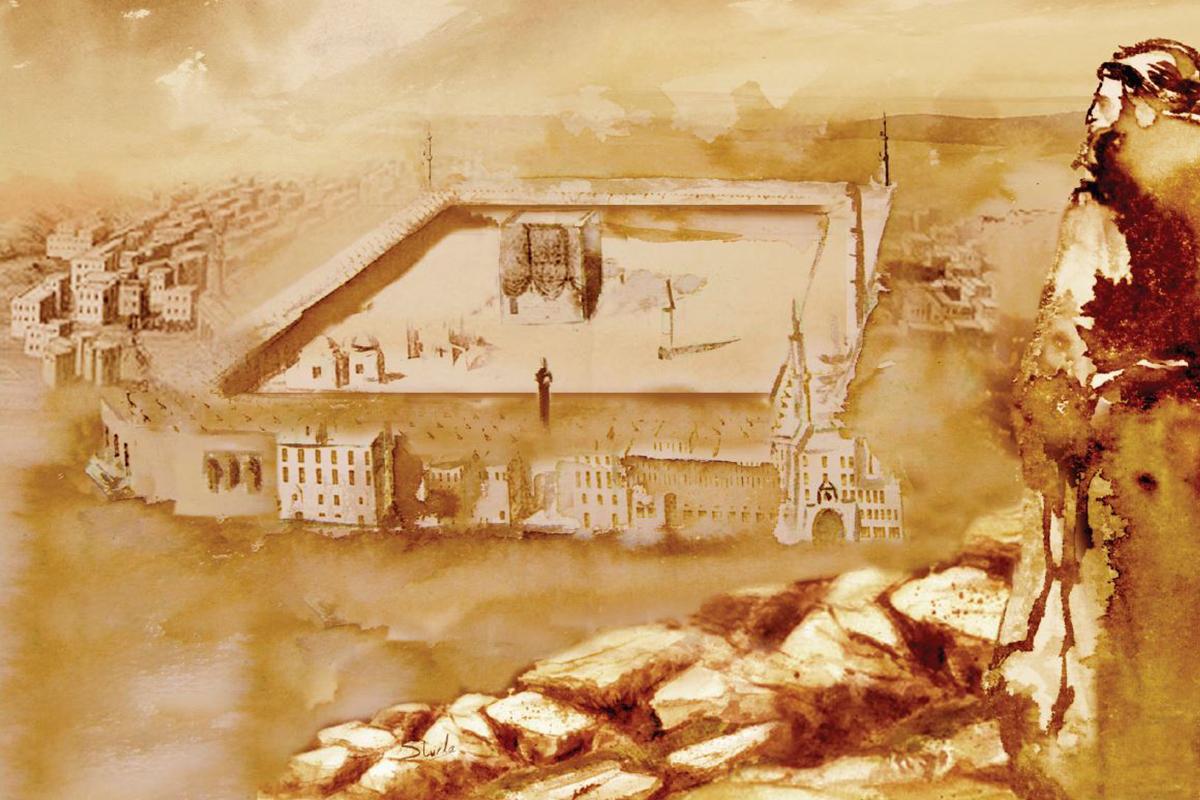
The following year, he left Khwarezm on a pilgrimage to Makkah, probably via Merv, Isfahan and Basra. That same year (1155) he returned to the city of Baghdad, where he wrote his travel book al M’urub, that he dedicated to his friend the patron and minister Awn al-Din, in whose residence he was hosted. He probably was thinking about returning to his family. A part of it remained in Basgird, modern Hungary, and the rest had probably remained in Saysin, on the road towards the west, through Asia Minor, passing through the Seljuk sultanate of Konya. This trip was not made; instead, it appears he travelled from Baghdad to Khurasan.
Abu Hamid al-Garnati defined the literary genre kutub al-‘aya’ib(“book of wonders”), a style in which he described his transit through legendary places inhabited by mythical peoples where feats inherent to the world of the impossible happened. As he himself wrote in one of his prologues: “Marvels are found in the most remote part of the sky and the earth. Our Lord has ordered us to contemplate the wonders of the world.”
By Ingrid Bejarano Escamilla (Arabist. University of Seville)
Illustrations: ©AramcoWorld. Belén Esturla


